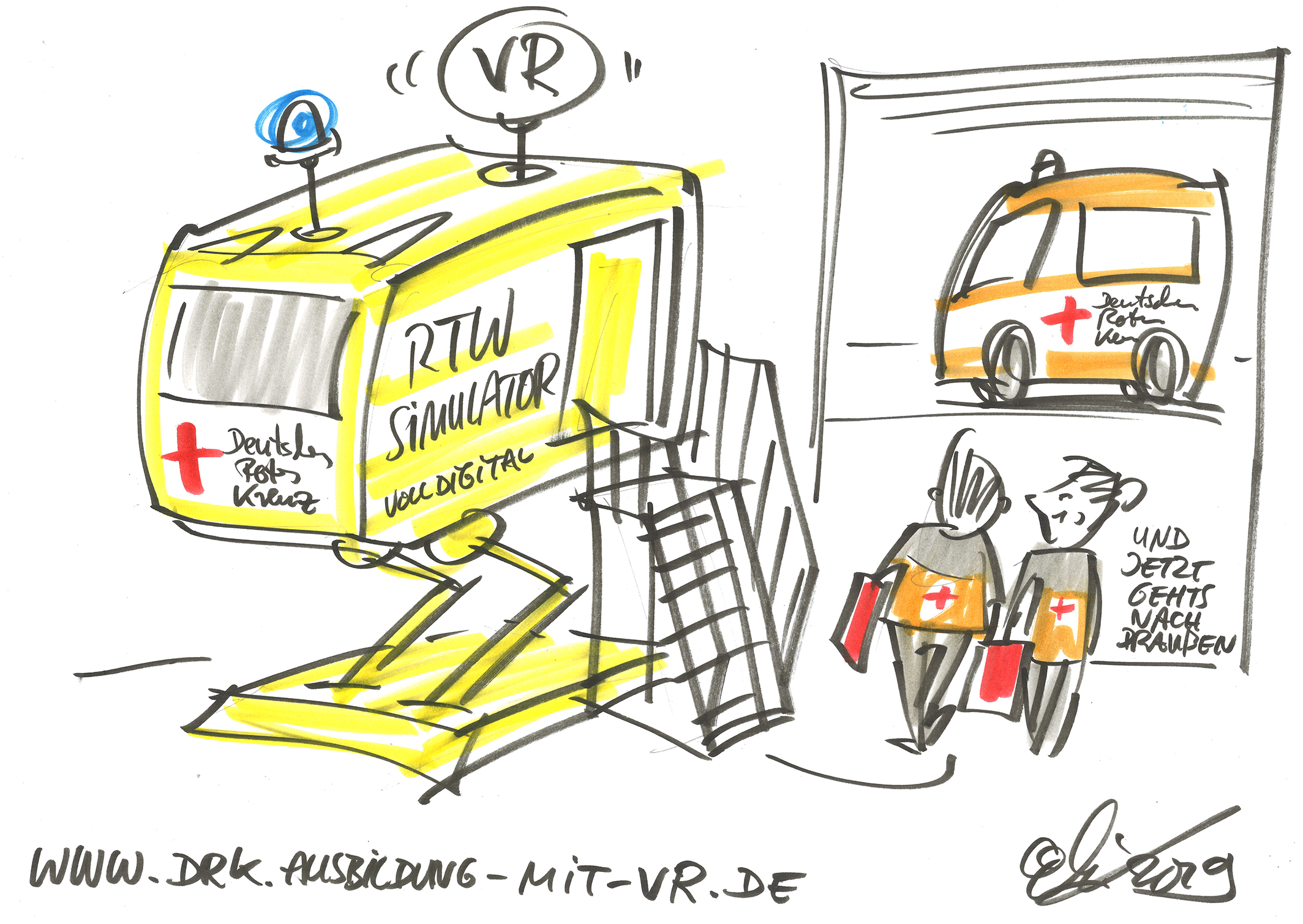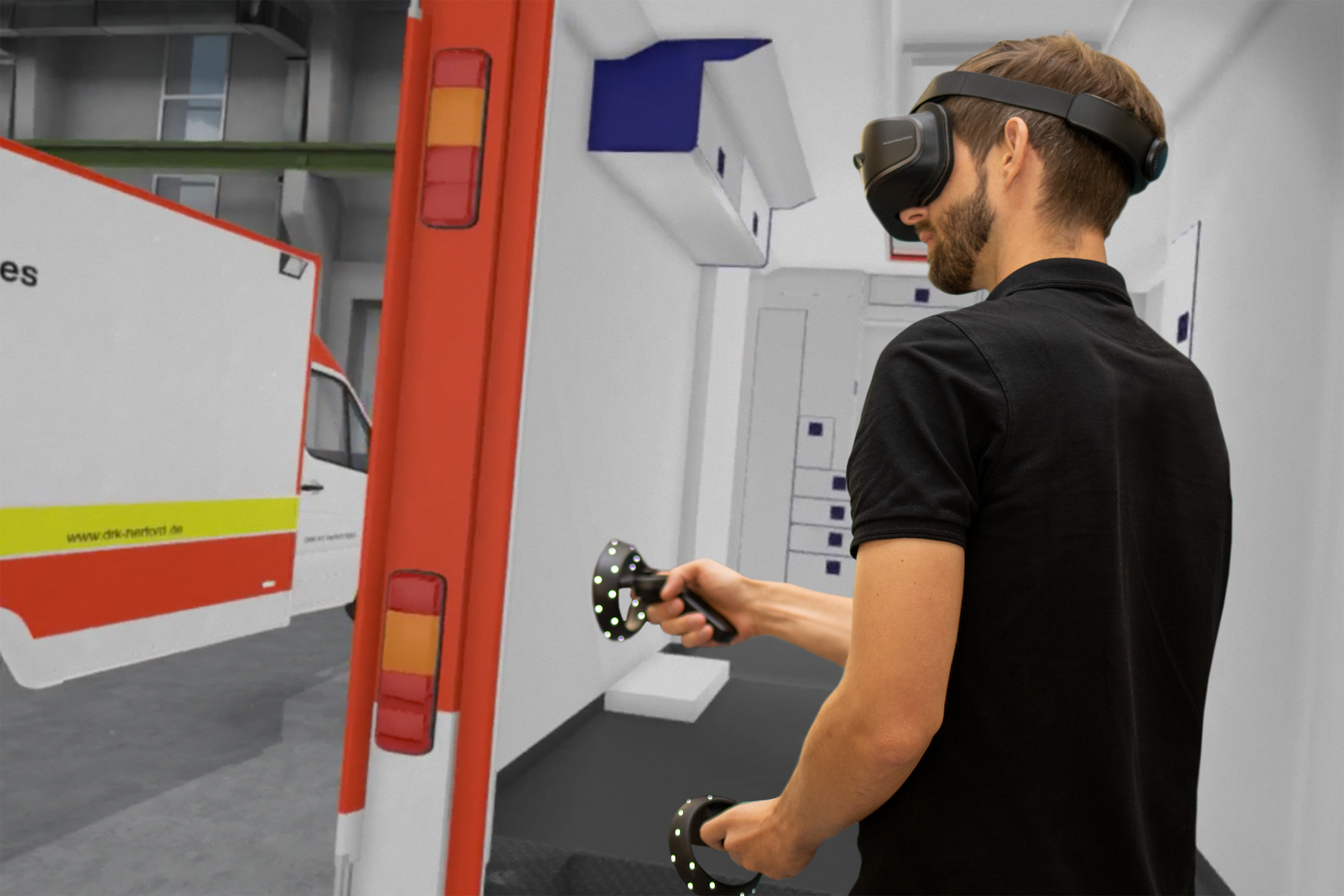Ambulance Simulator and Engineers Trainings
Virtual training environments, which have their origins in industry, are also changing training in other sectors. Fraunhofer IGD’s support system Machine@Hand will soon be available for use in training emergency medical technicians, or EMTs.

(Rostock/Berlin) The Fraunhofer Institute for Computer Graphics Research IGD is making its virtual training tool Machine@Hand available to train volunteer EMTs. Similar to how pilots are trained in a flight simulator, every trainee in the Herford chapter of the German Red Cross will soon need to have completed a certain number of hours in an ambulance simulator until they automatically know what drawer to open in what case. The intention here is not only to build confidence and certainty while treating a patient, but also to make the training less time-consuming, particularly by eliminating the need to travel to a central training site. This will make it possible to reduce the time needed for the training, which can be up to 800 hours, over the long term. An important step in making volunteer work more attractive, since what very few people know is that 80 to 90 percent of EMTs are volunteers. This is one of the reasons Thomas PIlz, the German Red Cross chapter’s volunteer digitization officer, wants to promote new training methods: “What drives us is the vision of training people in a way that fits into today’s lifestyle.” Another advantage of virtual training is that an ambulance does not need to be on hand for every exercise.
New possibilities in every sector
Machine@Hand was developed as an industrial support system for the manufacturing industry, where procedures and maintenance processes are becoming increasingly challenging and complex. Disassembling and reassembling large machinery simply for training purposes is not only time-consuming and expensive, but also often almost impossible logistically. This makes training on the actual machine extremely complicated. This is why the mechanical engineering company Heidelberger Druckmaschinen AG uses Machine@Hand to train its service engineers. Dr. Mario Aehnelt, head of the Visual Assistance Technologies Competence Center, sees very clearly the applicability and the potential for other sectors: “Machine@Hand can essentially be used for any kind of machine or technical unit, so, for example, medical personnel can be trained in the use of new dialysis systems.”

Ease of use and active involvement
In a virtual training environment, which can be operated on VR glasses, a tablet or a smartphone, three-dimensional work instructions are displayed in context and with exact positioning, producing an authentic learning effect. Setting up the training application is also intuitive and requires no programming knowledge. Based on modular 3D models, display options such as hiding and showing, color-highlighting, animating objects, and integrating text, images and videos make it exceedingly simple to determine what information should be displayed. The trainees are not just consumers, rather they are able to add their own comments to the training scenarios and share their ideas with others. This collaborative aspect also quite incidentally teaches successful teamwork.
Fraunhofer IGD invites you to the “Go-Visual” workshop on October 24, 2019 in Berlin, where representatives from business and science meet every year to discuss the possibilities and latest developments of visual support for production. This year’s focus is on virtual training. On October 25, 2018, the first roadshow for all Machine@Hand users and interested parties will also be held in Berlin, focusing on constructive exchange both between the guests themselves and with the developers.
 Fraunhofer Institute for Computer Graphics Research IGD
Fraunhofer Institute for Computer Graphics Research IGD